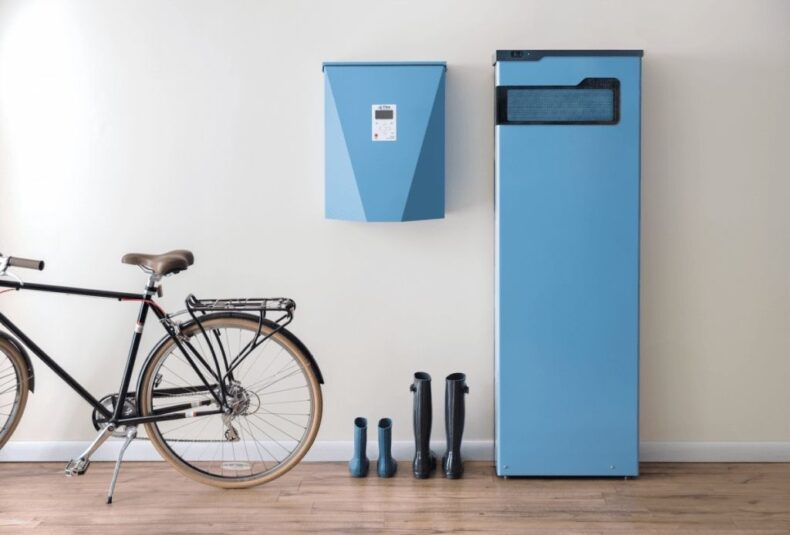
What are the best Tesla Powerwall alternatives?
In 2015, Tesla paved the way for energy self-consumption with their Powerwall — the first home energy storage system (ESS). A plug-and-play solution that stores the energy produced by solar panels into rechargeable lithium batteries that you can use at any time in your home.
But Tesla is not the only company offering ESS solutions. For this reason, we selected the 7 best Tesla Powerwall alternatives in 2024, considering both their price and the technology they provide.
Affiliate Disclaimer
Table of Contents
What is a Tesla Powerwall?
The Powerwall is the commercial name Tesla uses for its domestic energy storage solution, also known as an AC battery.
This wall-mounted box incorporates the following components:
- A rechargeable lithium-ion battery pack
- An AC inverter
The Powerwall is able to store AC electricity from a solar inverter and deliver AC electricity (110V/220V, 60Hz) back to your household electrical system or to the electrical grid.
Is buying a Powerwall worth it in 2024?
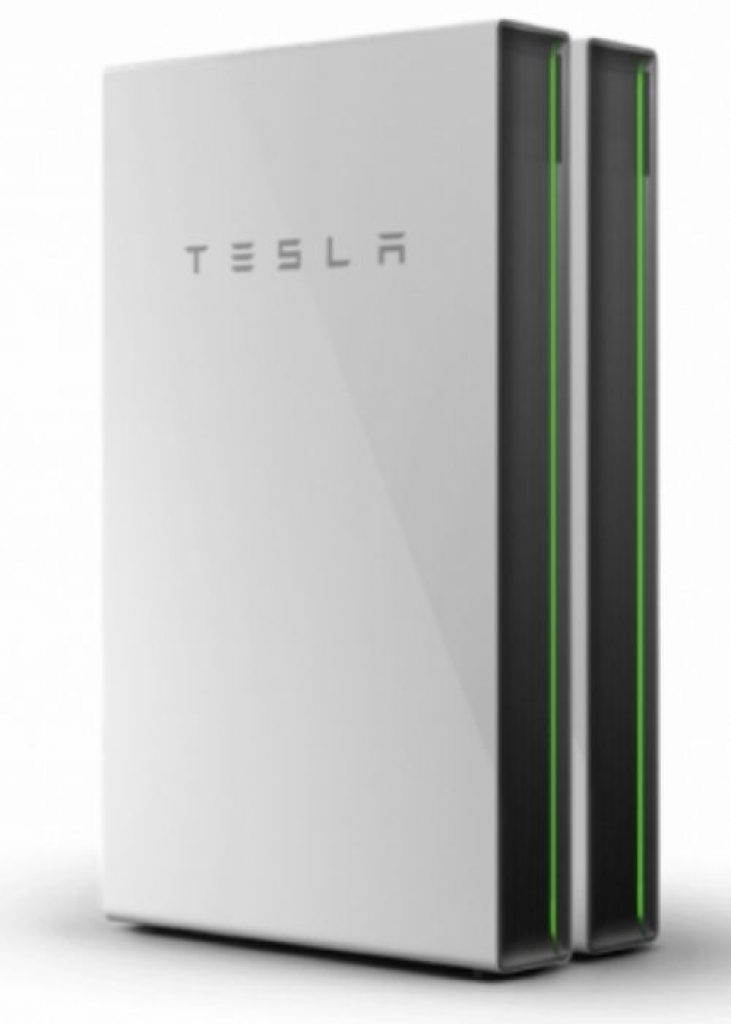
The Powerwall is undoubtedly a worthwhile addition to your home electric system. There are three distinct advantages to this energy storage solution:
- Reliability: A reliable source of electricity acting as backup power in case of a power outage (13.5kWh).
- Energy independence: Enables solar energy self-consumption for partial or complete off-the-grid homes.
- Control: Time-based, controlled energy consumption — self-consumption during peak hours).
Tesla Powerwall+ specifications
For the sake of this article, we’re going to use the latest iteration of Tesla’s ESS, the Powerwall+.
| Usable capacity | 13.5 kWh |
| Continuous power rating | 5.0 kW |
| Depth of Discharge (DoD) | 100% |
| Round-trip efficiency | 90% |
| Warranty | 10 years (unlimited cycles) |
| LCOS: $/kWh (Before Tax Incentives) |
$0.30/kWh |
| Unit + Installation Cost (excluding tax incentives) |
$11,500 |
7 Best Tesla Powerwall alternatives in 2024
Now it’s time to look at our list of the best Tesla Powerwall alternatives in 2024.
These products are all-in-one solutions that offer high storage capacity, powerful inverters, and competitive levelized cost of storage (LCOS).
| ESS Systems | Panasonic EVERVOLT 2.0 (EVHB-L6) |
Enphase IQ Battery 10 | Fortress Power eVault Max | LG RESU RESU16H-Prime | Sonnen EcoLinx 12 | Electriq PowerPod 2-15 | Generac PWRcell |
|---|---|---|---|---|---|---|---|
| Usable capacity | 17.5 kWh | 10.08 kWh | 18.5 kWh | 16 kWh | 12 kWh | 15 kWh | 14.3 kWh |
| Round-trip efficiency | 90% | 96% | 98% | 90% | 86% | 96.6% | 96.5% |
| Cycle Life at DOD% | 6,000 cycles & 80% DOD | 4,000 cycles at 70% DOD | 8,000 cycles at 80% DOD | 3,650 cycles at 60% DOD | 15,000 cycles at 65% DOD | N/A | N/A |
| Warranty | 10 years | 10 years with an optional 5-year extension. | 10 years | 10 years | 15 years | 10 years (45,000 kWh) |
10 years (7,560 kWh throughput) |
| LCOS | $0.18/kWh – $0.24/kWh |
$0.43/kWh – $0.60/kWh |
$0.09/kWh | $0.49/kWh | $0.30/kWh | $0.33/kWh | $1.96/kWh |
| Total cost (ex. tax incentives) |
15,000 to $20,000 | $12,000 to $17,000 | $10,920 | $17,000 | $35,000 | $15,000 | $15,000 |
Note to our readers: The Powerwall alternatives listed in this article are in no particular order.
1. Panasonic EVERVOLT 2.0 EVHB-L6 (17.5 kWh)
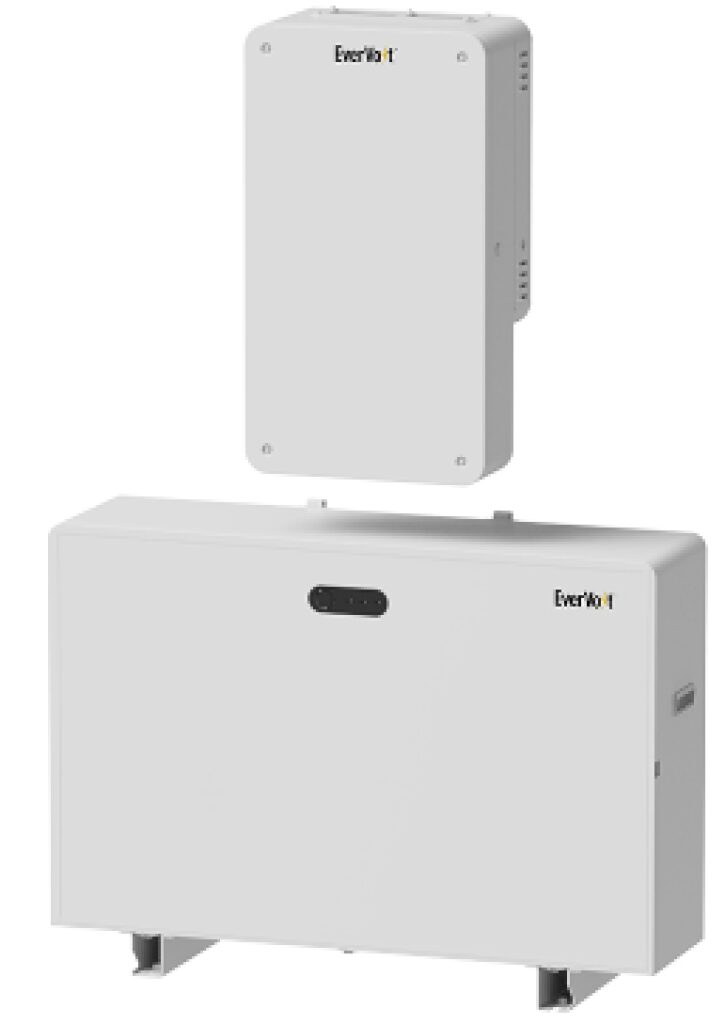
Panasonic is one of the world’s largest and most trusted electronic brands.
Currently, the company offers its flagship EverVolt™ battery storage systems that integrate seamlessly with its solar panels, creating a “Total Home Solar Energy System.”
Their EverVolt 2.0 can be AC- and DC-coupled to work with new and existing solar panel systems.
Why is it a worthy alternative?
Unlike the Powerwall, which requires additional equipment, the Evervolt 2.0, with its built-in solar charger, is a real plug-and-play solution for your solar panels.
The Evervolt 2.0 has a larger capacity than the Powerwall. Moreover, it’s easy to add extra battery modules to reach a whooping 52.5kWh!
Finally, with an LCOS of $0.18/kWh – $0.24/kWh (lower than the Powerwall’s), it’s competitive with the current retail electricity price in the U.S.
2. Enphase IQ Battery 10 (10.08 kWh)
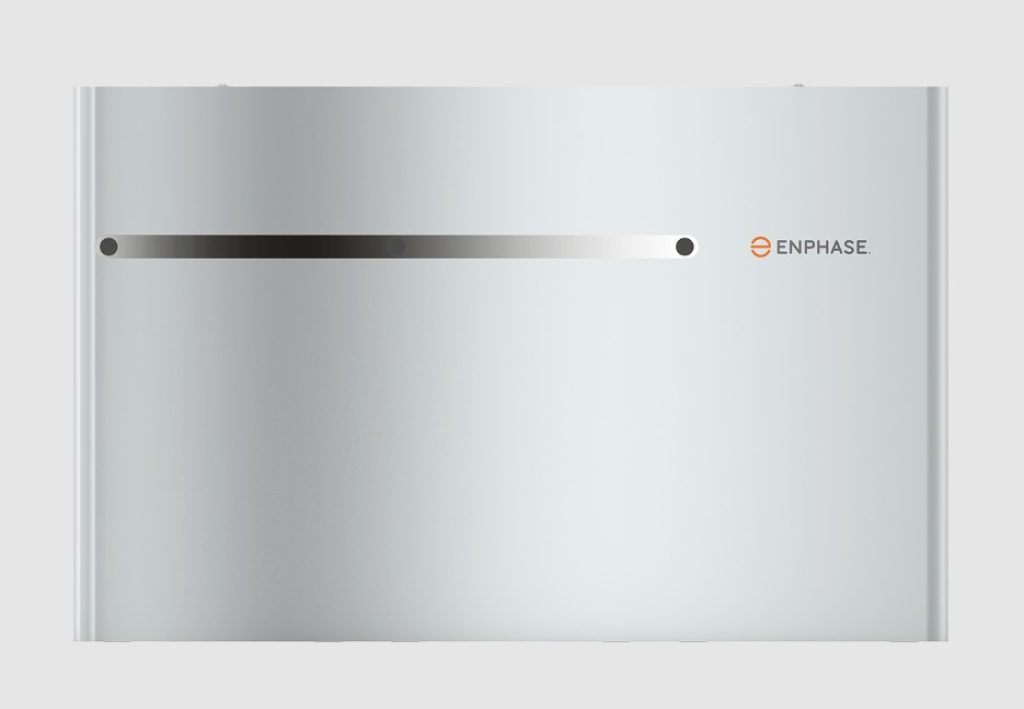
Enphase Energy is one of the world’s largest manufacturers of solar inverters. It stands to reason why the company would create a battery that you can pair effortlessly to your home using its well-renowned micro-inverters.
Why is it a worthy alternative?
Our chosen Powerwall alternative from Enphase comes in the form of its 10 kWh IQ Battery offering.
While its usable capacity (10.08 kWh) and continuous power rating (3.84 kW) don’t quite match up to the Tesla Powerwall’s — 13.5 kWh and 5.0 kW — it does have a 6% higher round-trip efficiency.
3. Fortress eVault Max (18.5 kWh)

Fortress Power is a U.S. company manufacturing domestic energy storage solutions based on LFP batteries. They are committed to delivering the most advanced product combining high storage capacity and long-life duration.
The eVault Max is AC/DC coupled to solar arrays and works for many applications that require solar storage, including:
- Off-grid.
- Back-up power.
- Self-supply.
- Peak charge reduction.
- Demand response.
Why is it a worthy alternative?
For starters, the Fortress FlexTower offers a larger storage capacity than the Tesla Powerwall, providing you with increased autonomy.
Rated at 12kW, the paired inverter is also more powerful than the Powerwall (5kW).
Finally, its LCOS ($0.09/kWh) is significantly lower than the Powerwalls ($0.30/kWh) – the upfront cost is higher but will pay back over the product’s lifetime.
4. LG RESU RESU16H-Prime (16 kWh)
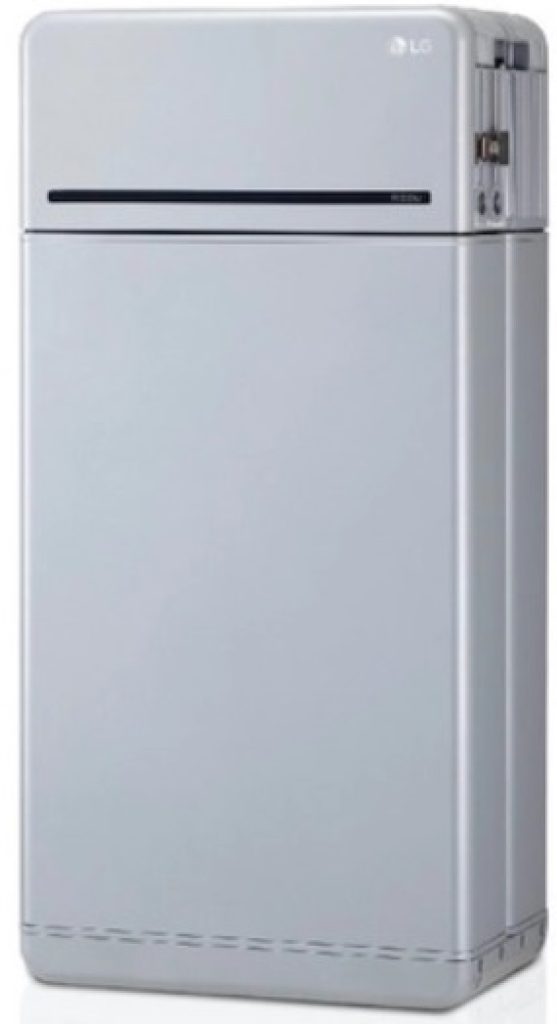
LG Chem is a battery manufacturer specializing in LFP technology. Their RESU16H battery storage, coupled with the SolarEdge EnergyHub solar inverter, offers a great alternative to the Powerwall.
Why is it a worthy alternative?
The LG RESU 16H, coupled with the SolarEdge 6kW inverter, is a complete plug-and-play solution to store solar energy. Unlike the Powerwall, you won’t need extra equipment to connect your solar panels.
5. Sonnen EcoLinx 12 (12 kWh)
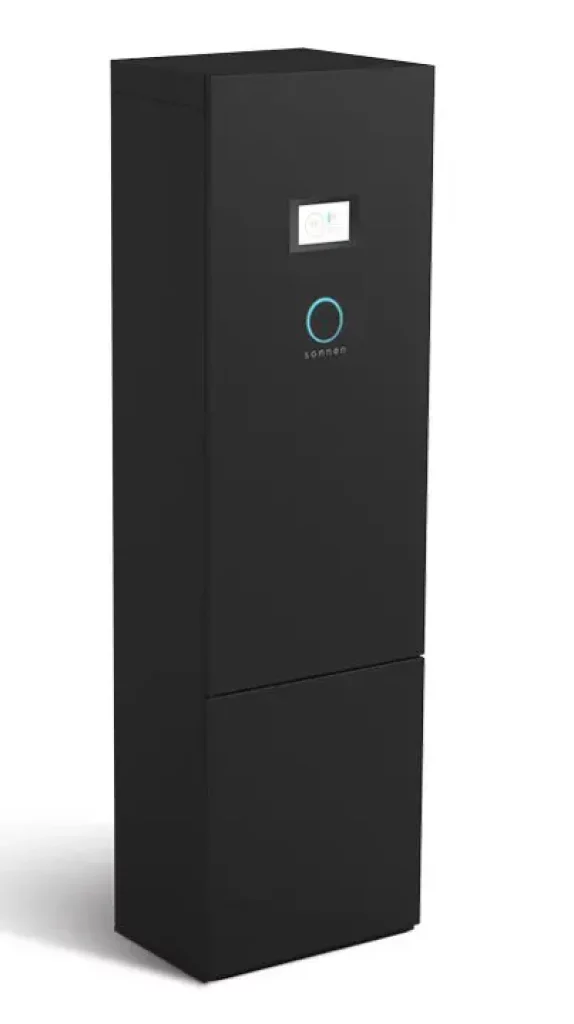
Why is it a worthy alternative?
The EcoLinx is an AC-coupled battery that offers similar specifications to the Powerwall. It’s a smart storage solution that includes the latest innovations, such as weather forecasting. This feature allows it to detect severe weather and automatically increase the amount of energy stored in the battery.
Additionally, it’s the most durable alternative to the Tesla Powerwall, with a 15-year warranty and 15,000 cycles on the battery.
Although its upfront cost is high, it has a respectable LCOS thanks to it having the longest warranty (15 years). With this storage solution, your investment will pay back over time.
6. Electriq PowerPod 2-15 (15 kWh)

Electriq Power is a U.S.-based company that develops smart home battery storage solutions.
Although this is a young company, they build their products to the highest quality standards and include the latest features such as cloud monitoring.
Why is it a worthy alternative?
The PowerPod 2 is a plug-and-play solution, so you’ll connect it directly to your solar panels. It has a built-in solar charger that makes it more efficient than the Powerwall.
In addition, it has a slightly larger storage capacity than the Powerwall+. However, its LCOS ($0.33 USD/kWh) is slightly more than the Powerwall’s ($0.30/kWh).
7. Generac PWRcell (14.4 kWh)
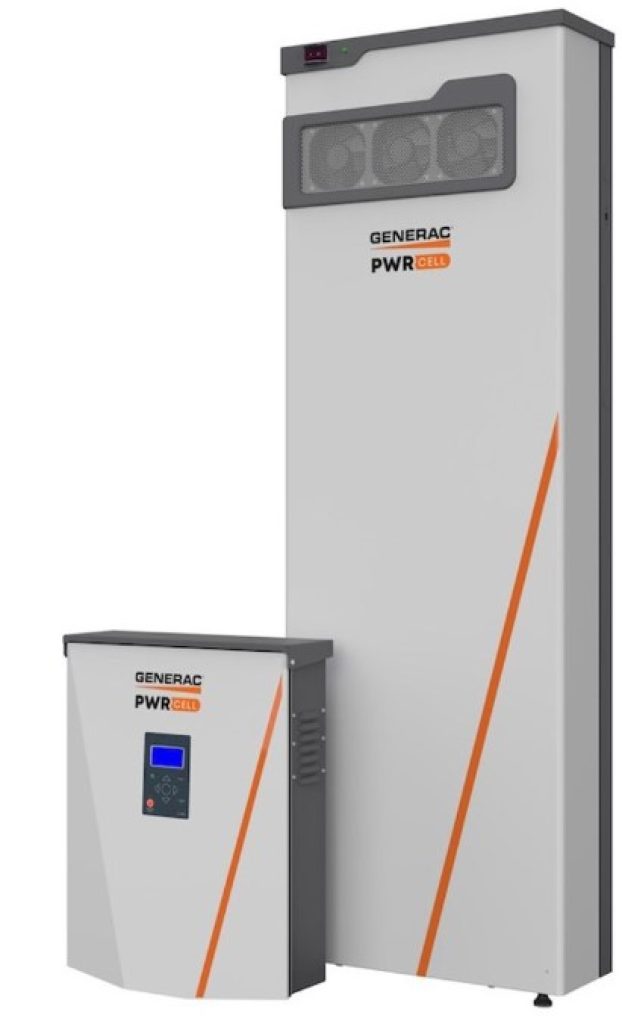
Founded in 1959, Generac is one of the most trusted and popular US brands for fuel-type generators. Their range goes from mobile-type generators for industrial purposes to homeowner backup systems.
Recently they introduced a new product: the Pwrcell, an all-in-one domestic energy storage solution to challenge the Tesla Powerwall+.
Why is it a worthy alternative?
The Pwrcell includes a built-in MPPT solar charger. It means you can directly connect your solar system, unlike the PowerWall 2, which only accepts AC charging and needs an extra conversion step (DC to AC).
In short, the Pwrcell is more efficient than the Powerwall at storing solar electricity.
Moreover, it’s easy to upgrade with a modular design that allows up to 6 battery modules in one cabinet (18kWh max.).
With similar specifications and warranty, the Pwrcell is more expensive than the Powerwall, but keep in mind that you don’t need to buy micro-inverters for your solar panels.
FAQs
Do all these ESS systems work with any type of solar panel?
Generally, most ESS systems are designed to be compatible with a wide range of solar panels. However, it’s always recommended to check with the manufacturer or supplier to ensure compatibility with your specific solar panel model.
How do these alternative ESS systems handle extreme weather conditions?
Most ESS systems are built to withstand a variety of weather conditions, from extreme heat to cold. They typically come with protective casings and are designed to operate efficiently within a specified temperature range. However, it’s essential to check the specifications and guidelines provided by the manufacturer.
Can I expand the storage capacity of these alternative ESS systems in the future?
Some ESS systems offer modular designs that allow for easy expansion in the future. For instance, the Generac PWRcell has a modular design that can accommodate up to 6 battery modules. It’s always a good idea to check with the manufacturer about expandability options.
How do these ESS systems compare to the Powerwall in terms of installation complexity?
Installation complexity can vary based on the design and features of the ESS system. Some systems, like the Panasonic EVERVOLT 2.0, offer a plug-and-play solution, making installation relatively straightforward. However, it’s always recommended to have a professional handle the installation to ensure safety and optimal performance.
Are there any mobile apps or software available to monitor and manage these ESS systems?
Many modern ESS systems come with cloud monitoring capabilities, allowing homeowners to track their energy consumption, storage levels, and overall system health through mobile apps or web platforms. For instance, Electriq Power offers cloud monitoring for its PowerPod 2.
How do these alternative ESS systems handle power outages?
Most ESS systems, including the alternatives listed, are designed to provide backup power during outages. They can automatically switch to battery power when they detect a disruption in the grid, ensuring continuous power supply to the household.
FAQs
What is the primary purpose of an Energy Storage Solution (ESS) in a residential setting?
The primary purpose of an ESS in a residential setting is to store excess energy produced by solar panels or other renewable sources. This stored energy can then be used during times when the sun isn’t shining, during peak energy usage hours, or during power outages, providing homeowners with a continuous and reliable power supply.
Are there any environmental benefits to using an ESS system at home?
Yes, ESS systems, when paired with renewable energy sources like solar panels, reduce the dependency on fossil fuels. This leads to a decrease in greenhouse gas emissions and promotes a cleaner, more sustainable energy solution for households.
How do ESS systems contribute to the concept of a “smart home”?
ESS systems often come with advanced features like cloud monitoring, real-time energy consumption tracking, and integration with home automation systems. This allows homeowners to optimize their energy usage, reduce costs, and integrate their energy storage with other smart home functionalities.
How long does it typically take to recoup the investment made in an ESS system?
The time it takes to recoup the investment in an ESS system depends on several factors, including the system’s cost, local electricity rates, and any available tax incentives or rebates. On average, homeowners can expect a payback period of 5 to 10 years, but this can vary based on individual circumstances.
Can ESS systems be integrated with other renewable energy sources besides solar panels, like wind turbines?
Yes, while many ESS systems are primarily designed to work with solar panels, they can also be integrated with other renewable energy sources like wind turbines. It’s essential to consult with the ESS manufacturer or a renewable energy expert to ensure compatibility and optimal performance.
How do ESS systems impact the resale value of a home?
Installing an ESS system can increase the resale value of a home. Prospective buyers often view energy storage solutions as a valuable addition, especially in areas prone to power outages or with high electricity costs. An ESS system signifies energy independence, potential savings on electricity bills, and a commitment to sustainable living, making the property more attractive to potential buyers.
Final thoughts
Tesla pioneered domestic Energy Storage Solutions (ESS) with the Powerwall. Since then, dozens of companies offering competitive products have popped up.
Indeed, we are now living through a transitional phase in energy production — from fossil fuels to renewables. Moreover, we are moving from a centralized to a decentralized way of producing energy.
Thanks to the combination of solar panels and ESS, anyone can become a producer of electricity that can be self-consumed or despatched into the electrical grid.
ESS systems are becoming more affordable with the dropping price of LFP batteries. In addition, with the development of hydrogen technologies, their energy density and reliability will improve, making them an essential addition to every household in the coming years.



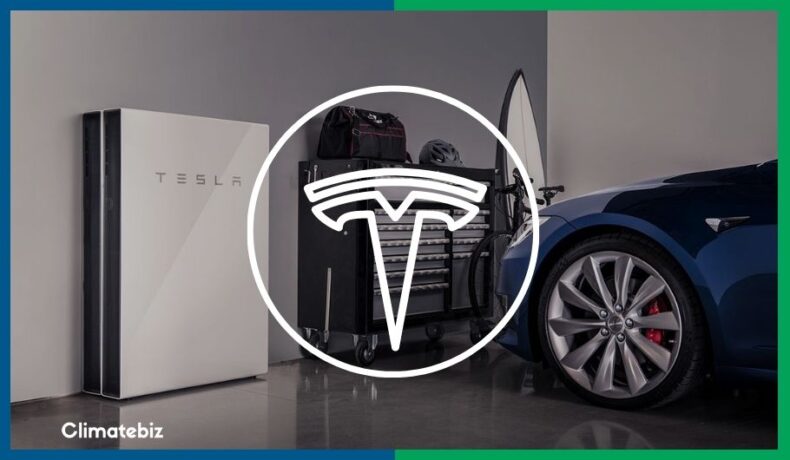




Really good informative article. We are a solar and wind company out of Cheyenne, Wyoming. We are often researching new products- this article was great, I sent it out to my crew and we will be discussing all these ESS alternatives to Tesla. Thanks again!
Hi Kevin, we are glad you enjoyed the article! 🙂
the equipment cost of a Powerwall is USD 7.5K plus an additional $1K of required equipment
If I already have AC panels via Enphase microinverters, I suppose I lose efficiency having to reconvert AC to DC for storage. Then convert again to AC for domestic use, right? A full extra round trip DC(panels)-AC(microinverters)-DC(MPPT)-AC(final inverter).
Hello Crevasse, yes that is correct. Naturally, you will lose efficiency when converting AC to DC, likewise from DC to AC again. The amount though depends on the equipment you are using.
Kyle,
Can any of these be set up to deal with a brownout condition? In other words provide that percentage of electricity that the local utility company is reducing to a home due to high demand? Thanks.
That is the purpose of energy storage systems such as the Tesla Powerwall and its alternatives.
People buy batteries for two main reasons:
1. They want to use solar energy later in the day when the sun is not available.
2. They want a source of backup electricity during emergencies such as brownouts/blackouts/”clouding” (when clouds block the sunlight)
That is why a lot of people consider hybrid solar systems.
Note: A Hybrid solar system combines the concept of both grid-tie and off-grid systems; it’s a grid-tied type setup with the added energy storage component for backup purposes.
In your case, it’s difficult to estimate how much electricity your utility will ration to your home each time a brownout occurs. Therefore, people typically get an energy storage system (ESS) that can support their essential appliances during a blackout (no power coming from the utility).
we have a Tesla Solar Roof… are all of these options compatible with it?
In principle, all solar panels should be compatible with any battery. However this should be done with caution. If you are going to handpick brands instead of availing bundles, you should be prepared to DIY.
Also, I have second thoughts about LAVO ESS since it is a hydrogen battery technology. You might need a special inverter for this.
Practically speaking, tesla is selling their solar panels as a bundle with powerwalls. You can choose to buy Tesla panels and pair it with other ESS but this will hurt your long-term relationship with your installer/service provider.
Most times it is better to avail the most cost-effective bundle in the solar plus storage market.
Interesting article, thanks. I’m wondering if an ESS system can reduce energy costs by letting it charge from the grid during the night (low price) and using the battery during peak hours (high prices) – so without solar panels. How big a price difference would you need to make it financially viable? how big a loss is there in charging an home battery? Here in Denmark electricity prices are fluctuating enormously, so I hope you can give some indications. 🙂
Thank you for your comment Dirk !
All the ESS featured in the article offer time-of-use (TOU) management. As you mention it, without solar panels, the ESS charges when the electricity price is low and power your house when electricity prices are high.
Now, let’s do the math.
I’ll take for example, the TOU in California. They have a rate plan named TOU-D PRIME.
During weekdays, electricity costs $0.21/kWh between 9pm and 4pm and $0.54/kWh during peak hours between 4pm-9pm.
That’s $0.33/kWh difference!
If one gets the PowerPod 2 featured in this article, it has a Levelized Cost of Storage (LCOS) of $0.18/kWh. This figure is based on the total number of cycles for this ESS (6000 cycles) divided by its price, inc. installation.
It means that every kWh that you will charge and discharge from the ESS will cost you $0.18.
The battery will charge during low hours at $0.21/kWh, add $0.18 and you’ll get a real cost of $0.39/kWh.
During peak hours, you will be saving: $0.15/kWh with your ESS.
In the end, you can save money even without solar panels, it all depends on the rate of your local TOU and the LCOS of your Energy Storage Solution.
To save even more, add solar panels, self-consume your electricity as a priority, then sell the surplus to the utility company.
Romaine, you failed to mention that the Tesla Powerwall+ has an integrated 7.6kW PV inverter, and that the Powerwall can scale to 10 units, which is 135 kWh.
Hello Bob,
Thank you for your comment.
You’re totally right, the Powerwall+ came out last year and has a 7.6kW PV inverter, and a combined capacity of 135kWh.
It is not directly integrated to the Powerwall battery unit though.
You’ll have this 7.6kW inverter in a separate wall-mounted box.